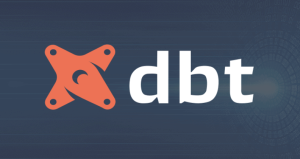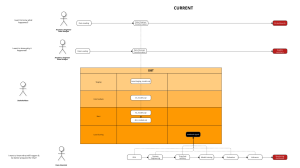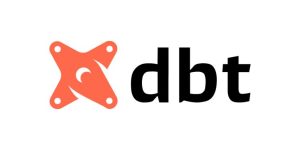With more and more data at our fingertips, it’s getting harder to focus on the information relevant to our problems and present it in an actionable way. That’s what business intelligence is all about.
BI tools make it simpler to corral the right data and visualize it in ways that enable us to understand what it means. But how simple that process gets, and how you can visualize the data depends on the tool: Picking the right one for your needs becomes important.
Here we round up of a dozen popular, highly regarded BI tools to help you uncover what your organization’s data can tell you about your business.
Top 12 business intelligence tools
- Board
- Domo
- Dundas BI
- Microsoft Power BI
- MicroStrategy
- Oracle Analytics Cloud
- Qlik
- SAS
- Sisense
- Tableau
- Tableau CRM
- Tibco
Board
Board International combines three tools in one: BI, predictive analytics and performance management. While it aims to offer something for everyone, it predominately focuses on finance-oriented BI. It has modules for finance (planning, consolidation), HR (skills mapping, workforce planning), marketing (social media analysis, loyalty and retention monitoring), supply chain (delivery optimization, supplier management), sales (cross-selling and up-selling analysis) and IT (KPIs, service levels). The company is Swiss, but the software is available in English, Spanish, Chinese, Japanese, French, German and Italian. The latest version of its platform has replaced its multidimensional online analytical processing (MOLAP) approach with an in-memory calculation engine.
- Target audience: The whole enterprise but usually enters via the finance department
- Notable features: Language support
- Pricing: License fee per user varies according to role
Domo
Domo is a cloud-based platform focused on business-user-deployed dashboards and ease-of-use. It offers business intelligence tools tailored to various industries (such as financial services, health care, manufacturing and education) and roles (including CEOs, sales, BI professionals and IT workers). CIOs might start by checking out how it handles data from AWS, Jira, GitHub, or New Relic before looking at how over 500 other integrations can help the rest of the enterprise.
- Target audience: CEOs, sales and marketing, BI professionals
- Notable features: Robust mobile interface
- Pricing: On request
Dundas BI
Dundas BI from Dundas Data Visualization is used predominantly for creating dashboards and scorecards, the company’s historic strengths, but it can also perform standard and ad-hoc reporting. Analysis and visualization are performed through a web interface that can adapt to users’ skills: Power users and standard users see different features. The latest version has a new in-memory engine, a new natural language query capability, and adds point-and-click trend analysis, support for Linux, and an application development environment for customized analytic applications. Dundas BI has been tailored for 19 industries, including cleantech, mining and construction, in addition to the usual suspects such as banking and healthcare. It sells to large enterprises but specializes in embedded BI.
- Target audience: C-suite, HR, finance, sales, marketing, customer service
- Notable features: Flexible, HTML5 interface that adapts to any device
- Pricing: Based on concurrent users, not named users, with no tie to number of servers or cores
Microsoft Power BI
With the Power BI Desktop app for Windows, users can analyze and visualize data from local or cloud sources, publishing their reports to the Power BI platform. It offers data preparation, visual-based discovery, interactive dashboards, and augmented analytics. The free Power BI Desktop version suits isolated users; the Pro version makes collaborative analysis easier, for a monthly fee, leveraging Microsoft Office365, SharePoint and Teams to control access to raw data and published reports. For enterprises that want to go all-in, the Premium tier makes self-service data prep possible with prebuilt connectors to corporate data held in Microsoft Dynamics 365, Azure SQL Data Warehouse, or third-party sources such as Salesforce.
- Target audience: Microsoft shops
- Notable features: Mobile app allows touch-screen annotation of reports
- Pricing: Desktop: free; Pro: $9.99 per user, per month; Premium: $4,995 per dedicated cloud compute and storage resource
MicroStrategy
MicroStrategy targets the enterprise BI market in a broad range of industries with cloud, on-premises and hybrid deployment options. It features a drag-and-drop interface to help users create customized data visualizations and build personalized, real-time dashboards. MicroStrategy touts federated analytics that allow customers to leverage existing investments in data sources such as Tableau, Qlik and Power BI, and blend the data to build reports and insights. It also features enterprise semantics graph, which indexes data assets to enrich data silos with location intelligence and real-time telemetry. MicroStrategy offers a free, 30-day full platform trial.
- Target audience: The whole enterprise
- Notable features: Digital credentials allow you to replace physical ID cards, passwords and tokens in favor of mobile role-based identity badges tied to smartphones
- Pricing: By request
Oracle Analytics Cloud
Oracle has spent the past several years bulking out its Oracle Analytics Cloud offering, launched in 2014 as an outgrowth of its flagship Business Intelligence Enterprise Edition suite. In 2020, it added a Cloud HCM offering to provide self-service workforce analytics to HR executives, analysts and line-of-business leaders. Oracle has focused on making its cloud offering intuitive and user-friendly, with powerful reporting and machine learning features. Key features include data preparation, data connectors, visualizations, predictive analytics, a native mobile app, and support for embedded analytics.
- Target audience: Users in midsize to large enterprises
- Notable features: Conversational analytics support natural language queries; can automatically generate natural language explanations to explain visualizations and trends
- Pricing: Enterprise: $80 per user, per month, or $2.1506 Oracle compute unit (OCPU) per hour; Professional: $16 per user, per month, or $1.0753 OCPU per hour; Professional – Bring Your Own License (BYOL): $0.3226 OCPU per hour; Enterprise – BYOL: $0.3226 OCPU per hour
Qlik Sense
Qlik’s goal is to give anyone in the enterprise access to all its data — subject, of course, to corporate data governance policies. All that data should be enough to bog down most database engines, but Qlik says its Associative Engine can associate every piece of data with every other piece to make it easier to search for connections. The Associative Engine now has AI and machine learning capabilities that offer context-aware insight suggestions thanks to the Qlik cognitive engine. Qlik Sense, the self-service tool to access that analytical capability, comes in cloud and on-premises versions.
- Target audience: The whole enterprise
- Notable features: Associative Engine can analyze all your data, on the fly
- Pricing: Limited versions: free; Qlik Sense Business: $30 per user, per month; Qlik Sense Enterprise SaaS: Analyzer: $40 per month; Professional: $70 per month; Analyzer Capacity Packs, $100 per month
SAS Visual Analytics
SAS’s take on BI is its Visual Analytics tool, offered via its cloud and microservices-based SAS Viya platform. It aims to automatically highlight key relationships in data: The latest version adds automated suggestions for relevant factors, along with insights expressed via visualizations and natural language. Other features include sentiment analysis for extracting data from social media and other texts, automatic generation of charts, mapping, and self-service data preparation. Deployment can be on premises, in public or private clouds, or on the Cloud Foundry platform as a service.
- Target audience: Users across large enterprises
- Notable features: Automated analysis functions
- Pricing: On request
Sisense
Sisense’s BI software stack covers everything from the database through ETL and analytics to visualization — and it claims its In-Chip database engine is faster even than in-memory databases. It is best known for embedded BI uses. The latest version adds new machine learning capabilities. Sisense is available on premises or in the cloud. There are solutions for finance, marketing, sales, HR and IT, as well as customer service and operations and logistics departments. Sisense also makes it possible to offer the analytics tools to users outside the enterprise by embedding them in web applications. Sisense acquired Periscope Data in September 2019 and is in the process of integrating advanced analytics capabilities gained through the acquisition.
- Target audience: Typically SMEs
- Notable features: Fully web-based client, including for data prep
- Pricing: On demand, based on an annual fee for software and service
Tableau
With Tableau, Tableau Software is covering all the bases: You can run its software on premises, choose a public cloud, or opt to have it fully hosted by Tableau. It offers tailored versions for over a dozen industries, including banking, healthcare and manufacturing, with support for financial, HR, IT, marketing and sales departments, although that’s almost par for the course these days. Tableau’s capabilities include mapping and analysis of surveys and time series data. Its latest trick is drawing on the artificial intelligence techniques of natural language processing to allow users to describe what they want to see, rather than clicking and dragging to create formulaic queries.
- Target audience: Midsize and larger enterprises
- Notable features: Tableau draws on natural language processing to enable users to say what they want to see
- Pricing: Each deployment needs at least one Tableau Creator ($70 per month); for Tableau Server (on-premises or public cloud), others can be Viewers ($12 per month, minimum 100) or Explorers ($35 per month, minimum 5); alternately, with Tableau Online (fully hosted by Tableau), others can be Viewers ($15 per month, minimum 100) or Explorers ($42 per month, minimum 5)
Tableau CRM
Formerly known as Einstein Analytics, Salesforce rebranded the offering as Tableau CRM in October 2020. Tableau CRM integrates Einstein Analytics’ advanced analytics capabilities — including predictive and prescriptive analytics — into Tableau’s full range of offerings. The goal is to extend self-service access to data to users across the business. Users can build predictive models for their data. There are industry-specific templates, and tailored tools for sales, service, marketing, and IT departments. The first fruit of the newly integrated offering is Einstein Discovery in Tableau, an AI and machine learning platform for predictive and prescriptive analytics. More integrations are planned. Salesforce is working on connecting Tableau natively to the Einstein Analytics data store, which will take advantage of the performance optimizations and native Salesforce security integration. That’s planned for release later in 2021.
- Target audience: Salesforce.com users
- Notable features: AI for BI, in Salesforce’s own cloud
- Pricing: $75 per user per month for Einstein Predictions, $125 for Tableau CRM Growth, $150 for Tableau CRM Plus
Tibco
Tibco Spotfire is a self-service, AI-powered data visualization platform for dashboards, interactive visualization, data preparation, and workflow. The platform offers machine learning-based data preparation capability to support building complex data models. It is deployed across many verticals, including financial services, energy, manufacturing, consumer packaged goods, government, travel and logistics, healthcare, and life sciences. The latest version adds support for Python.
- Target audience: Analysts and citizen data scientists
- Notable features: The ability to use data science techniques, geo-analytics, and real-time streaming data using natural language query and natural language generation
- Pricing: Pricing for Tibco Spotfire Platform (on your servers) and Tibco Cloud Spotfire Enterprise (private service) is available on request; Spotfire for Amazon Web Services starts at $0.99 per hour; Tibco Cloud Spotfire is $125 per month or $1,250 per year for analyst seats, $65 per month or $650 per year for business author seats, $25 per month or $250 per year for consumer seats, and $25 per month or $250 per year for 25GB of library storage
Source: cio
- Building a dbt project from scratch
- Common pitfalls in ML projects and how to avoid them.
- dbt Incremental part 2: Implementing & Testing
- Inventory Management & Demand Forecasting for E-commerce Sellers + Tutorial
- Understanding Vector Databases: A Comprehensive Guide
- What the heck is data analytics? Explain it like I’m five. - June 8, 2022
- Best Practices for Managing Data Access to BigQuery - October 11, 2021
- How PE firms can turn data science into a competitive advantage - October 11, 2021



